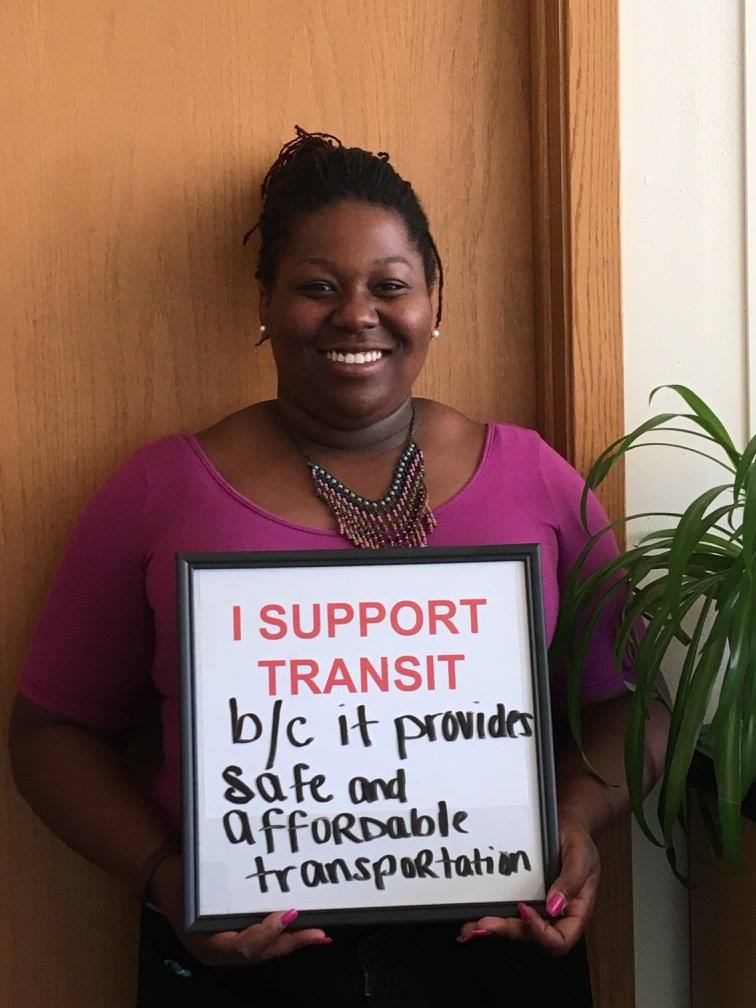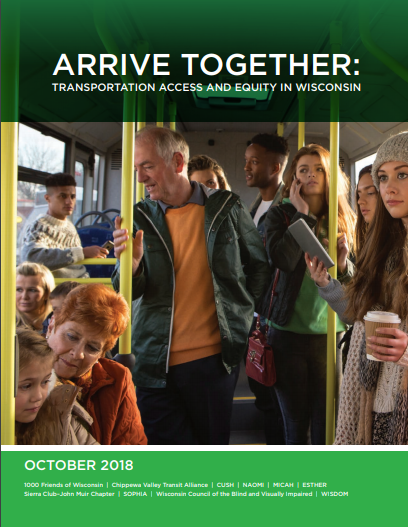
Today, October 23, transit riders, activists and transportation experts held six press conference across the state to release the a first-of-its-kind report, Arrive Together: Transportation Access and Equity in Wisconsin, which shows how people’s needs are not being met by the state’s transportation system. The report examines the effectiveness of public transit access to major employers and other areas of interest in nine cities and regions across Wisconsin, ranging in size from Milwaukee to Hayward.
This is a huge step for our work towards a clean and equitable transportation system and a great example of the grassroots power that our volunteers have. The report was a collaborative process between Sierra Club members and our allies. More than ten organizations and 17 Sierra Club volunteers helped make this report a success! To view a full copy of the report, visit sierraclub.org/Wisconsin/ArriveTogetherReport.
Arrive Together Release Highlights Transportation Needs Across Wisconsin
Statewide, the report’s authors identify a lack of transit access to school, work, the grocery store, the doctor’s office, and other needs. These gaps in the transportation system disproportionately impact those who are unable to drive or cannot afford to drive - including seniors, people with disabilities, low- to middle-income Wisconsinites, and young people.
“We have a fine Municipal Transit Utility (MTU) fixed route system here in La Crosse, but it unfortunately does not have the resources to expand as we might prefer. For example, I could not use the MTU to attend to my mother and stepfather during their final years because, although they had a La Crosse address, they did not live on a bus route. There was no easy way I could get to them to provide the help and support I would have liked to,” said Rhonda Staats, transit rider and chair of Wisconsin Council of the Blind and Visually Impaired’s Legislative Committee.
“When I began working on transportation issues in Wisconsin, I was shocked to find out that many of our agencies measure our transportation system's effectiveness on the number of cars that move or the number of riders that are on a bus, rather than if people can travel to the places they need to go to have a high quality of life. Our transportation system is failing us, and it is especially failing those who do not or cannot drive,” said Cassie Steiner, report author and Public Relations and Outreach Associate at the Sierra Club - John Muir Chapter. “Every place has unique challenges, but one thing is common across all of the places we surveyed: there is a lack of investment in public transportation, and that’s hurting our communities."
The report concludes that, while each community faces unique challenges in providing transportation access to employment, medical services, major businesses, local attractions or other points of interest, the absence of consistent and sufficient funding for public transportation is a major hurdle across the board. Demographic changes will likely exacerbate these challenges in the future: Statewide, communities are already struggling to meet the transportation needs of a growing population of seniors, and to retain young people who increasingly want to live in transit-friendly, walkable, bikeable towns and cities.
“Transit service to areas of the City of Eau Claire that have developed as major employment centers within the last thirty years, such as the Menard’s Distribution Center, are not served by transit because state funding has not kept pace with the growing needs,” said Jeremy Gragert, a board member of the Chippewa Valley Transit Alliance, and an Eau Claire City Council member.
Rick Detienne, member of Valley Transit Commission said, “we do not now, nor have we had for some time, sufficient financial resources to adequately fund public transportation for many of our citizens: people with disabilities, our elderly, or for workers just looking for a cost-effective and environmentally responsible ride to and from their jobs. Our funding shortfall limits both the frequency of service and the areas that can be effectively covered.”
The authors identify increased transit funding and better coordination between municipalities as viable solutions to many transportation challenges outlined in the report.
“We need to get our priorities straight, it is imperative that we increase funding for public transportation in the state budget that will allow for much needed transit capital improvements, new routes and increased frequency of service. We also need regional transportation options that will connect Wisconsin communities to each other and open up access to opportunity,” said Ashwat Narayanan, Director of Transportation Policy at 1000 Friends of Wisconsin.
Arrive Together: Transportation Access and Equity in Wisconsin was released by 1000 Friends of Wisconsin, Chippewa Valley Transit Alliance, CUSH, NAOMI, MICAH, ESTHER, Sierra Club – John Muir Chapter, SOPHIA, Wisconsin Council of the Blind and Visually Impaired and WISDOM, with support from the Wisconsin Public Interest Research Group (WISPIRG).
To view a full copy of the report, visit sierraclub.org/Wisconsin/ArriveTogetherReport.